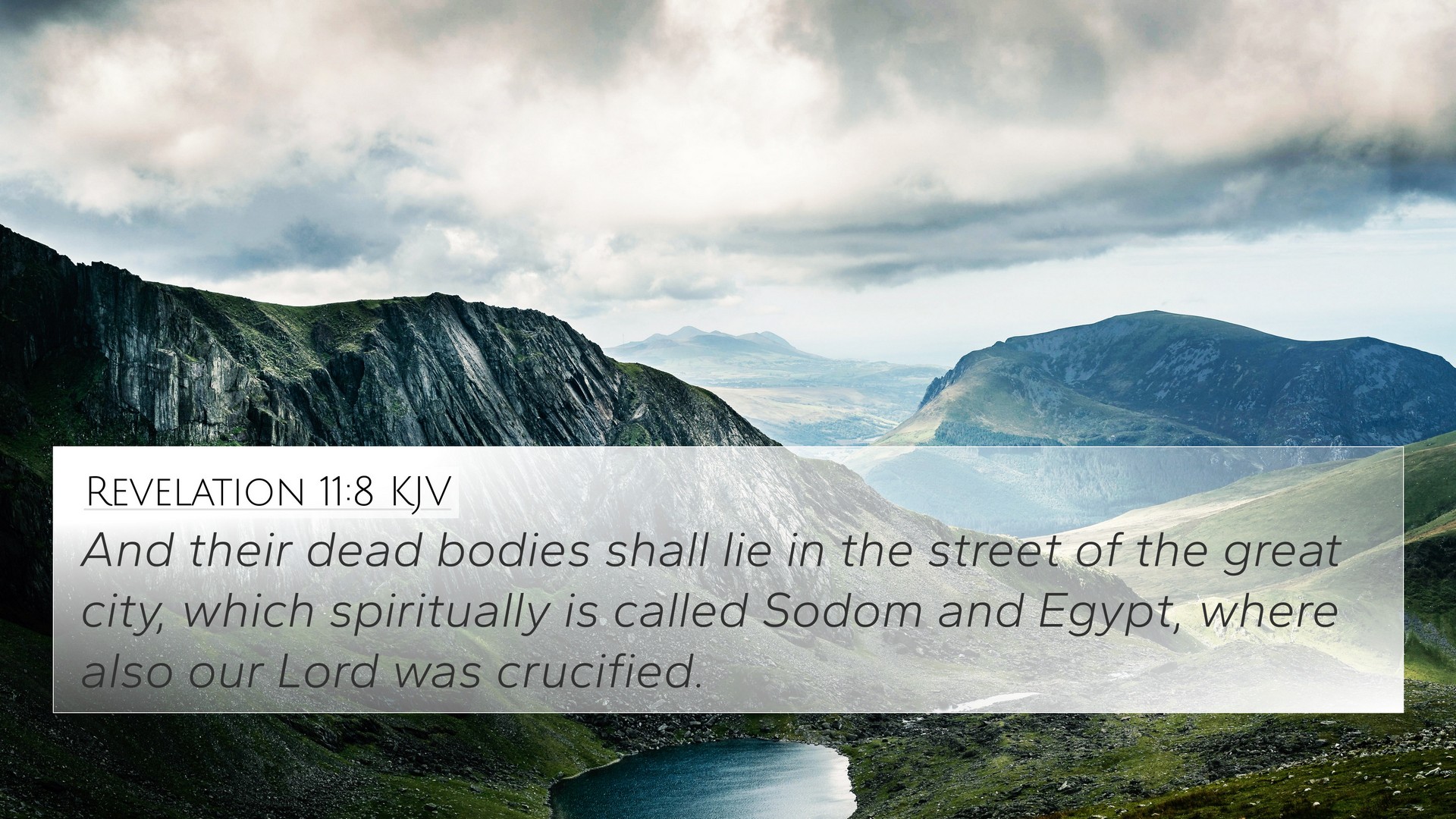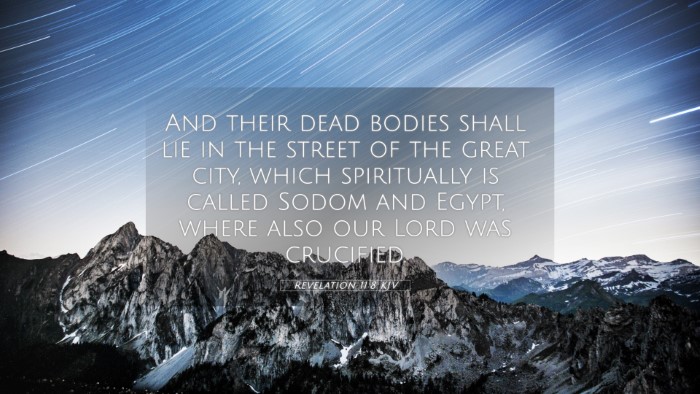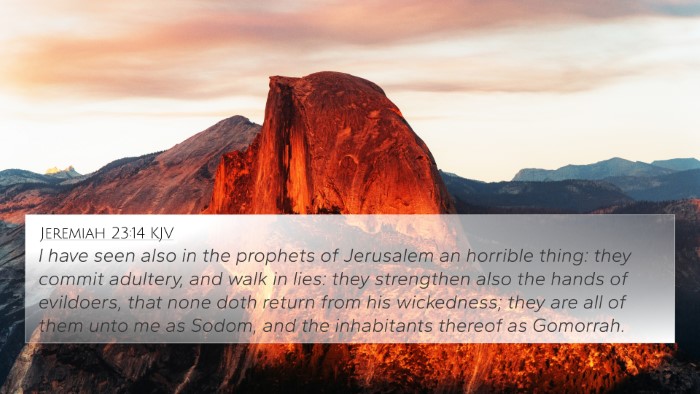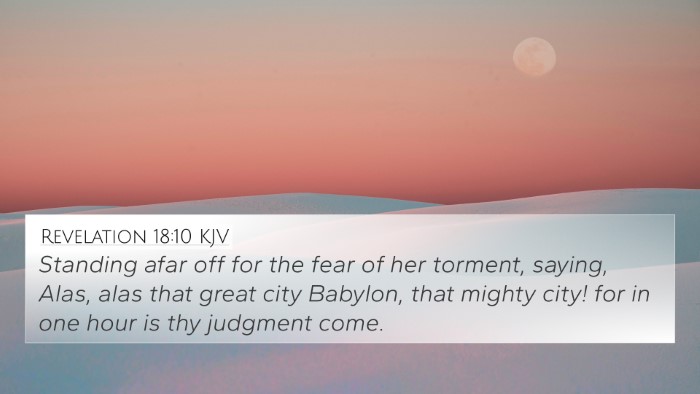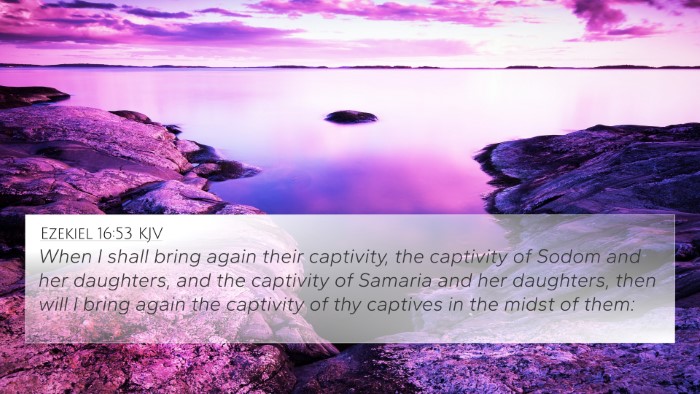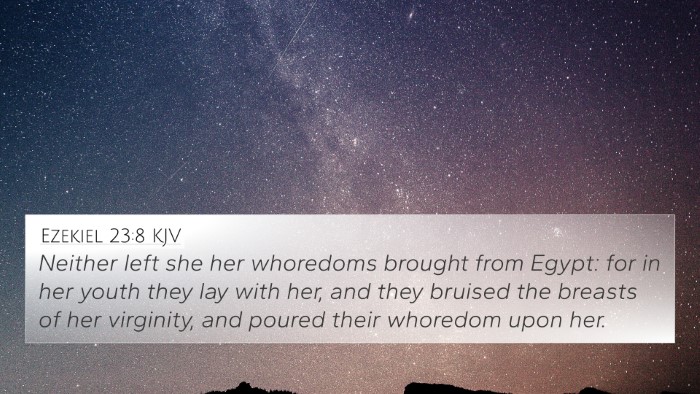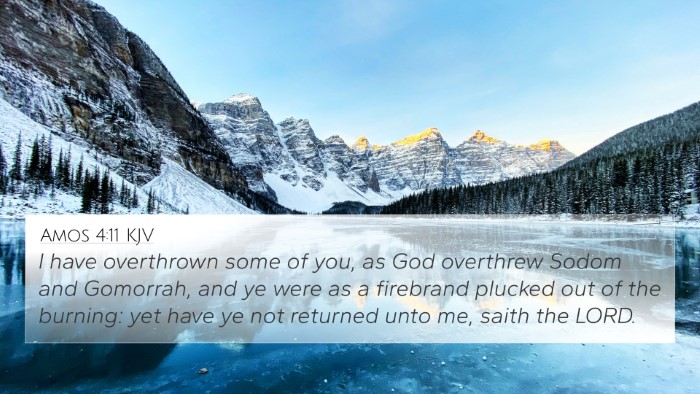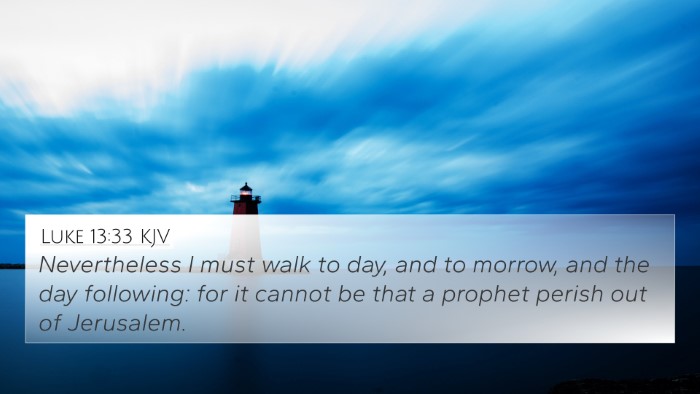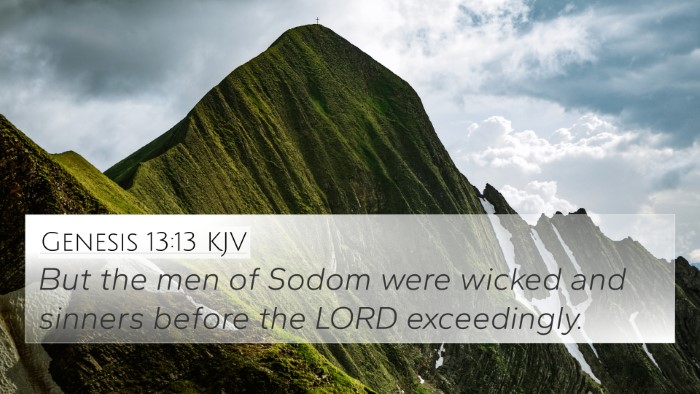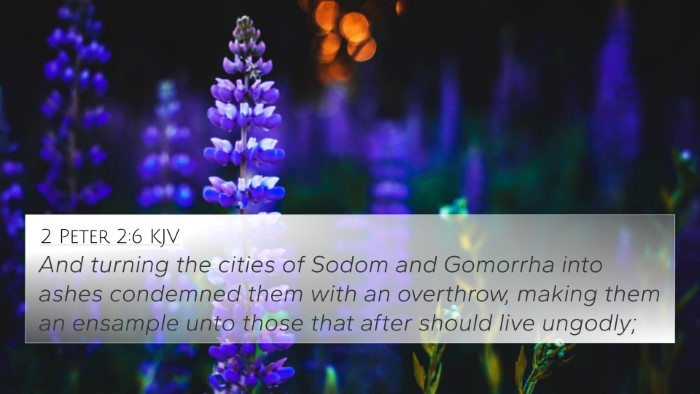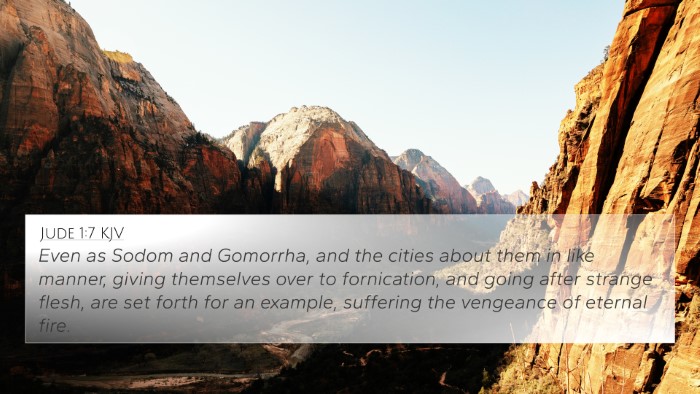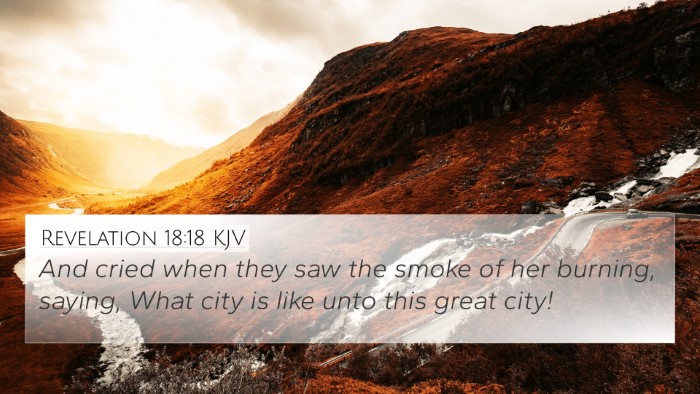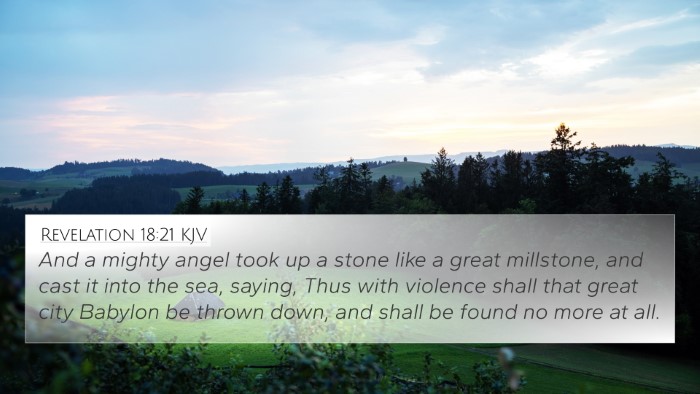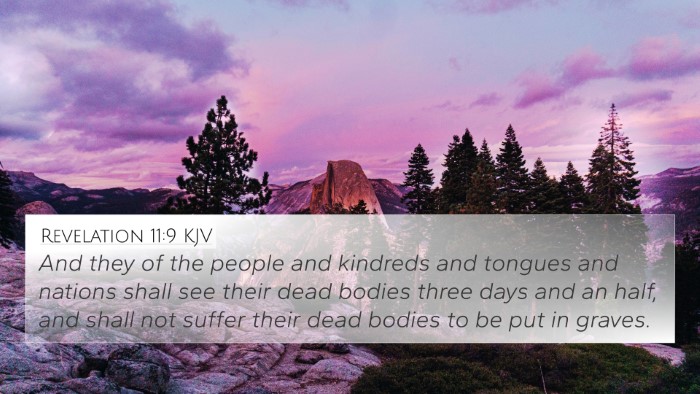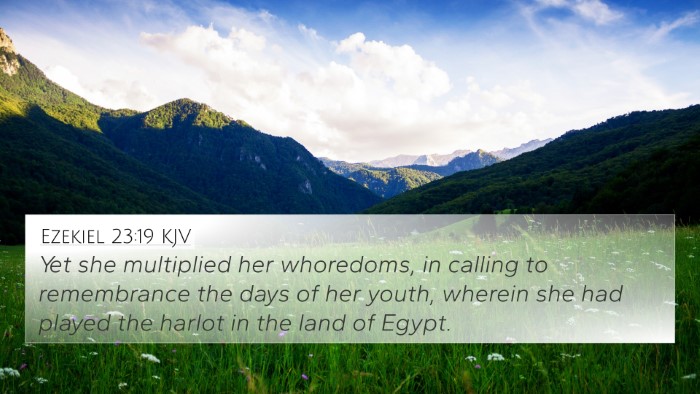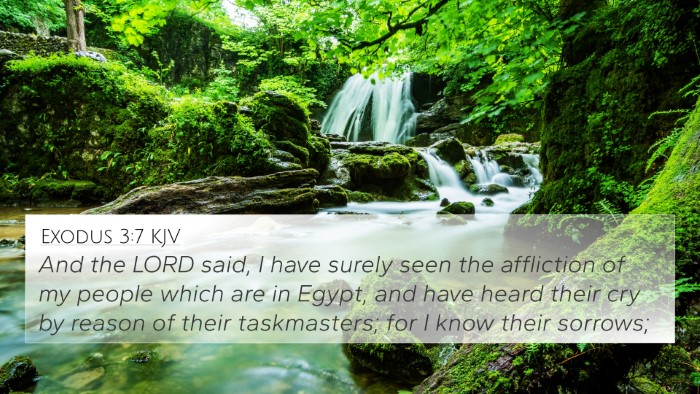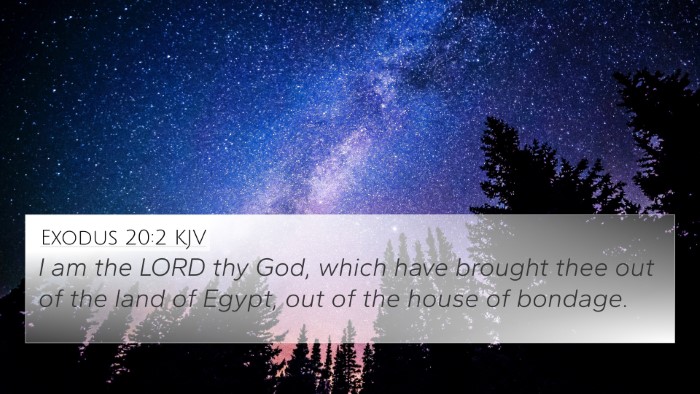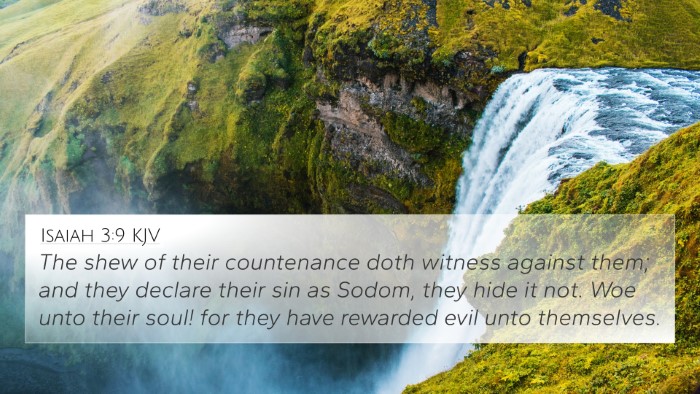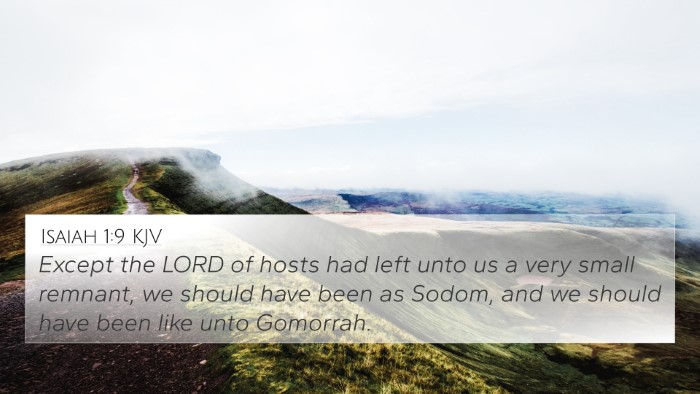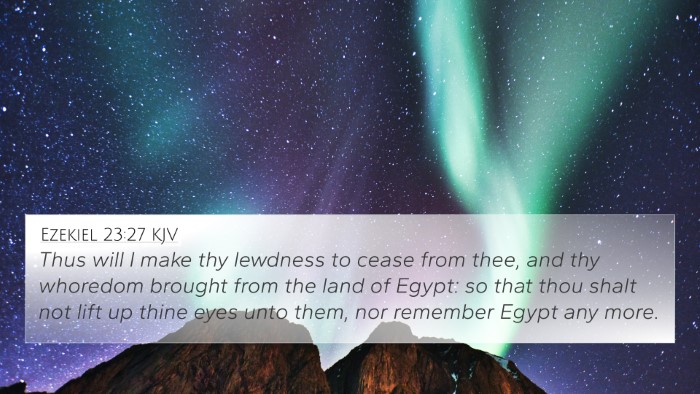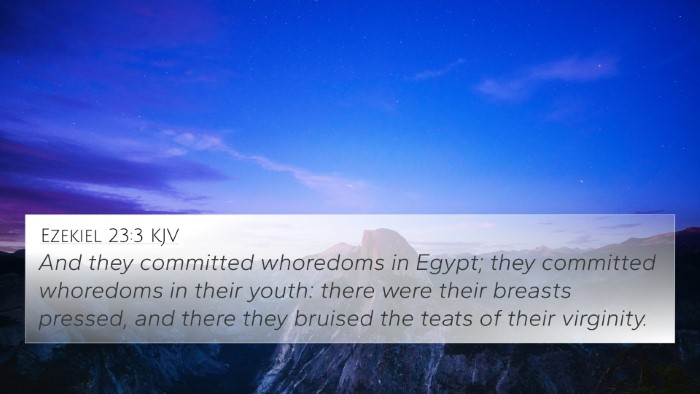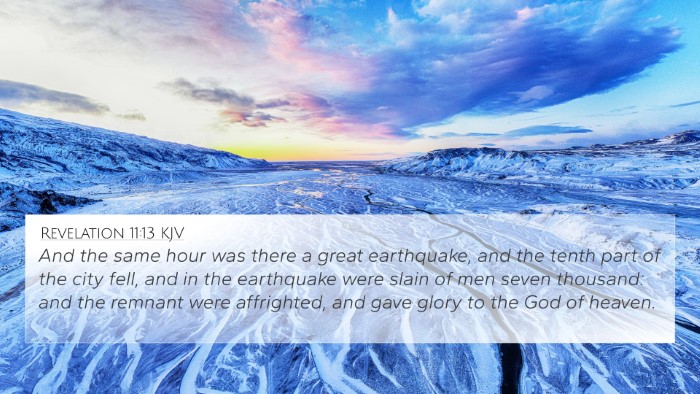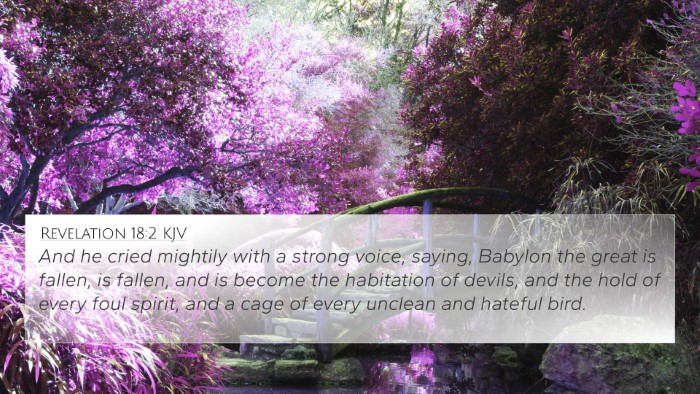Understanding Revelation 11:8
Revelation 11:8 states: "And their dead bodies shall lie in the street of the great city, which spiritually is called Sodom and Egypt, where also our Lord was crucified." This verse is rich in symbolism and carries significant theological implications. Below, we delve into the insights provided by various public domain commentaries to explore the meaning and connections of this scripture.
Verse Analysis
The "great city" mentioned in this verse has been interpreted by many, including Matthew Henry, as representing a place of spiritual decadence and moral corruption. The use of Sodom and Egypt as descriptors signifies immense wickedness and idolatry.
Thematic Elements
- Sodom: This allusion signifies defiance against God's commands and serves as a warning against societal depravity.
- Egypt: Often symbolizing bondage and oppression, Egypt here underscores the persecution faced by the faithful.
- Spiritual Death: The imagery of dead bodies reflects the consequences of a society that rejects God and embraces evil.
Critical Insights
Albert Barnes emphasizes that this verse can be seen as a commentary on the churches in a decaying world. He suggests that the death of the prophets (representing true witnesses of God) signifies a broader rejection of divine truth in a city emblematic of rebellion.
Adam Clarke notes the timing of this event as significant, stating that it occurs during a period of great tribulation for God's people. The depiction of the "dead bodies" also serves as a critique of secular governance that allows for such calamities to occur unchecked.
Related Bible Cross-References
This verse draws connections with several other scriptures, enhancing its interpretation through cross-referencing:
- Genesis 19:1-25: The destruction of Sodom and Gomorrah parallels the spiritual warning in Revelation.
- Exodus 12:29-30: The plagues of Egypt symbolize judgment and the corruption of a society without God.
- Matthew 27:33-35: The crucifixion in Jerusalem connects to the central theme of suffering in Revelation.
- Luke 13:34: The lament over Jerusalem ties in the narrative of rejection and divine grief.
- Romans 1:18-32: Describes the wrath of God against ungodliness, resonating with the themes of decay in Revelation.
- Revelation 14:8: Another mention of Babylon the Great highlights similar themes of immorality and idolatry.
- Zechariah 14:2: The prophecy about Jerusalem’s siege further emphasizes the struggles faced by the city of God.
Comparative Analysis
When we employ tools for Bible cross-referencing, we can observe the profound links between these texts. For instance, the moral decline depicted in Revelation 11:8 resonates with Old Testament accounts of destruction and judgment due to sin. This consistent theme throughout biblical history illustrates God's unchanging stance against evil.
Using a Bible cross-reference guide, one might discover that the use of "great city" in Revelation parallels the Old Testament depiction of Jerusalem's rejection of God. The insightful cross-referencing enriches our understanding of how Revelation acts as a bridge between historical accounts and future prophecy.
Practical Applications
Studying Revelation 11:8 through the lens of comparative Bible verse analysis allows believers to grasp the consequences of spiritual negligence both then and now. It poses significant questions about personal and communal morality in contemporary society, echoing the need for vigilance and faithfulness.
How to Use Bible Cross-References
- Identify Key Themes: Focus on the underlying messages found in similar biblical texts.
- Explore Symbolism: Understand the imagery and metaphor used throughout scripture.
- Contextualize Verses: Consider the historical and cultural background of each reference.
- Engage with Commentaries: Leverage insights from reputable biblical scholars for deeper understanding.
Conclusion
In conclusion, Revelation 11:8 serves as a potent reminder of the consequences of spiritual depravity and the rejection of God. By utilizing comprehensive Bible cross-reference materials, one can appreciate the interconnectedness of scripture and enhance their biblical understanding. As believers engage with these themes, they are encouraged to reflect on their own lives in relation to biblical exhortations.
For those seeking to delve deeper, the Bible concordance is an invaluable resource, guiding readers through intricate passages and their connections with other scriptures. This practice not only fortifies personal faith but allows for richer communal discussions regarding God's word.
Further Exploration
To fully grasp the implications of Revelation 11:8 and its cross-references, further study is recommended:
- Study of Prophetic Books: Understanding the broader context of prophecy can illuminate the messages of Revelation.
- Historical Contextualization: Investigating the culture and politics of biblically referenced cities strengthens comprehension.
- Thematic Group Studies: Collaborate with others to discuss key biblical themes and their applications in modern contexts.
Final Thoughts
Revelation 11:8 is not merely a historical observation; it is a poignant call to recognize the sanctity of life and the importance of living in alignment with God's will. As the interconnectedness of scripture becomes evident through careful study, believers can find hope and direction amidst an often chaotic world.
